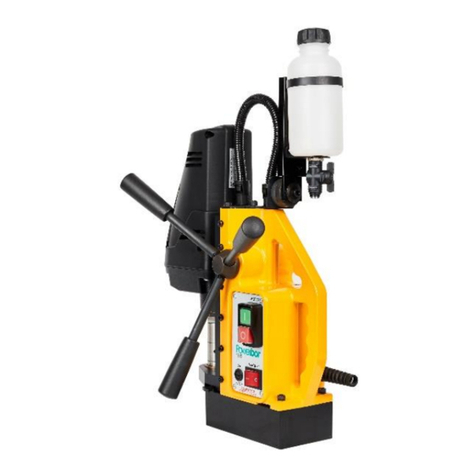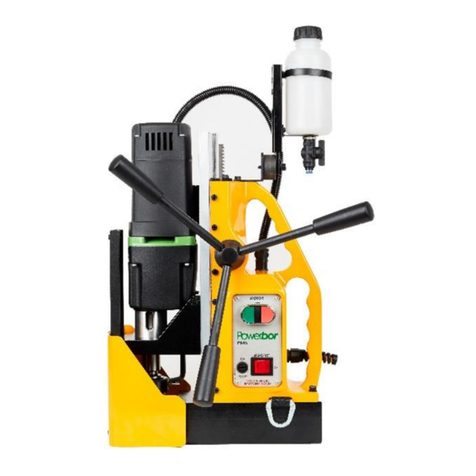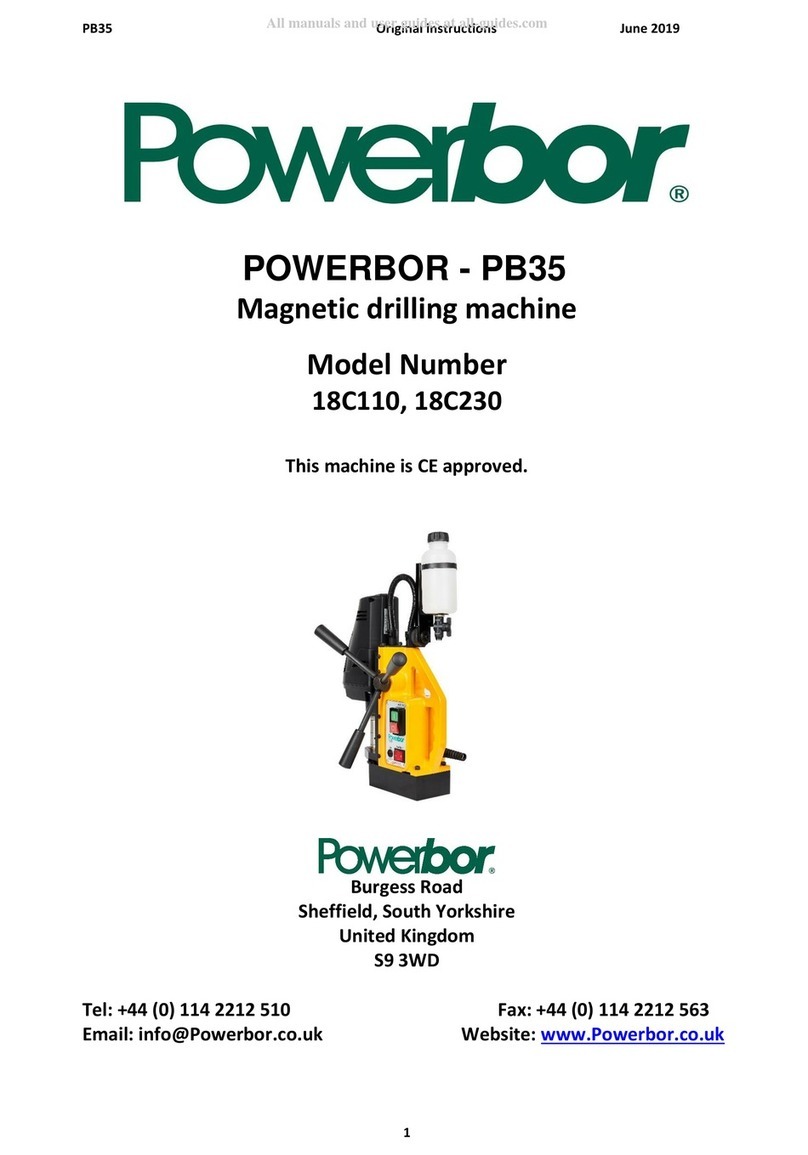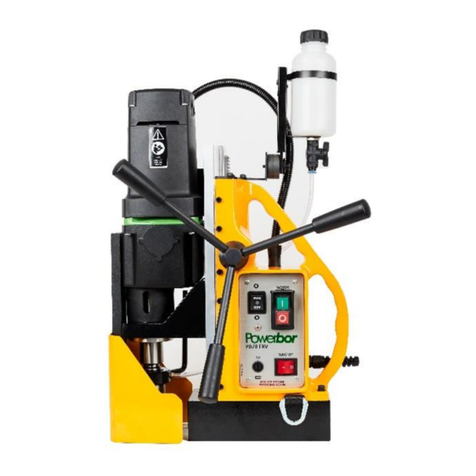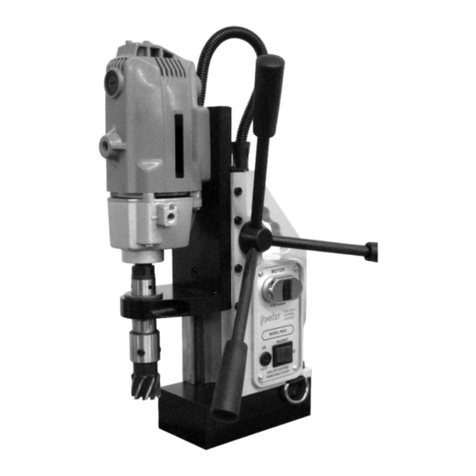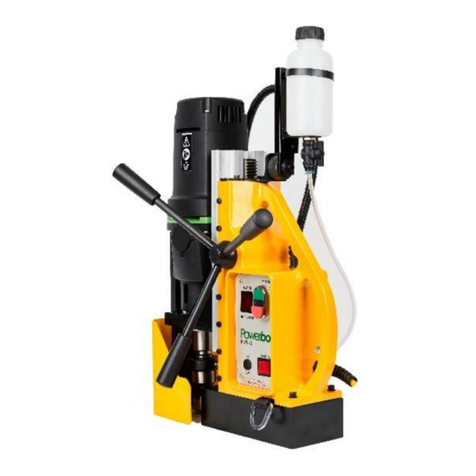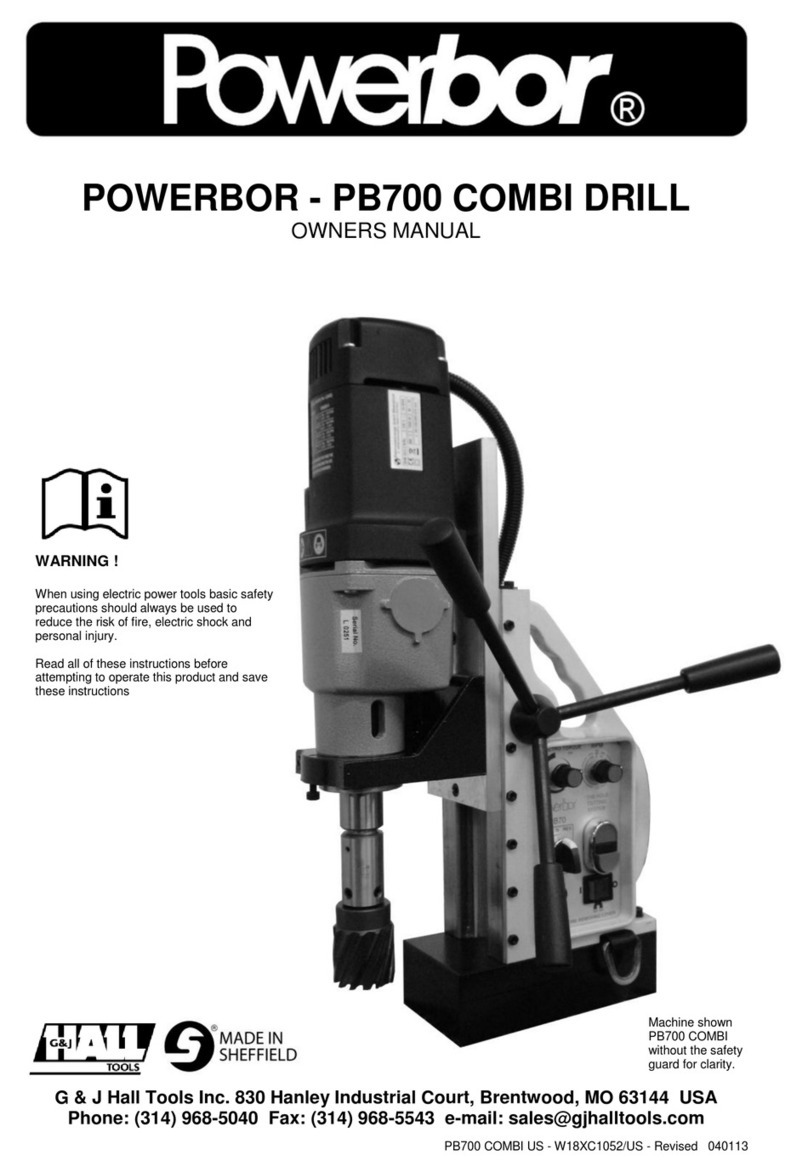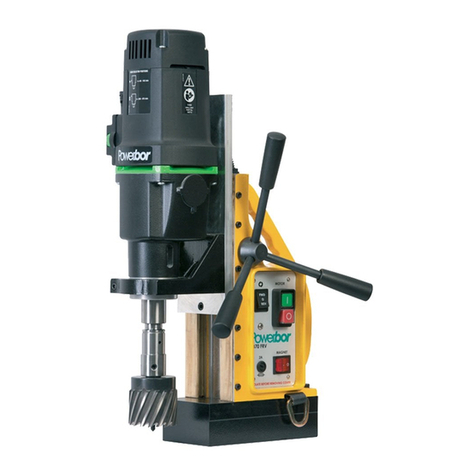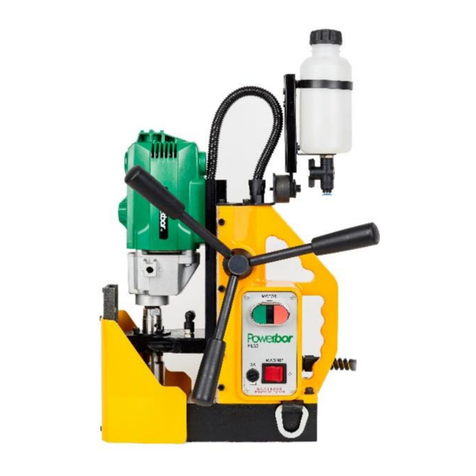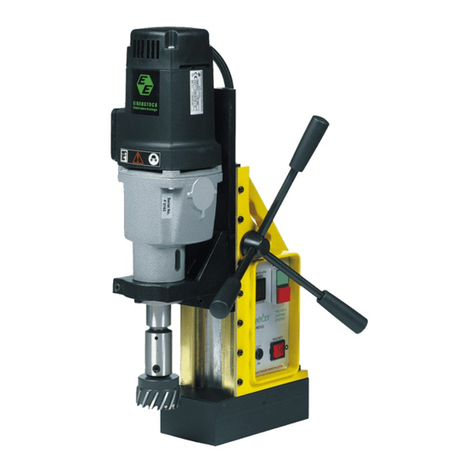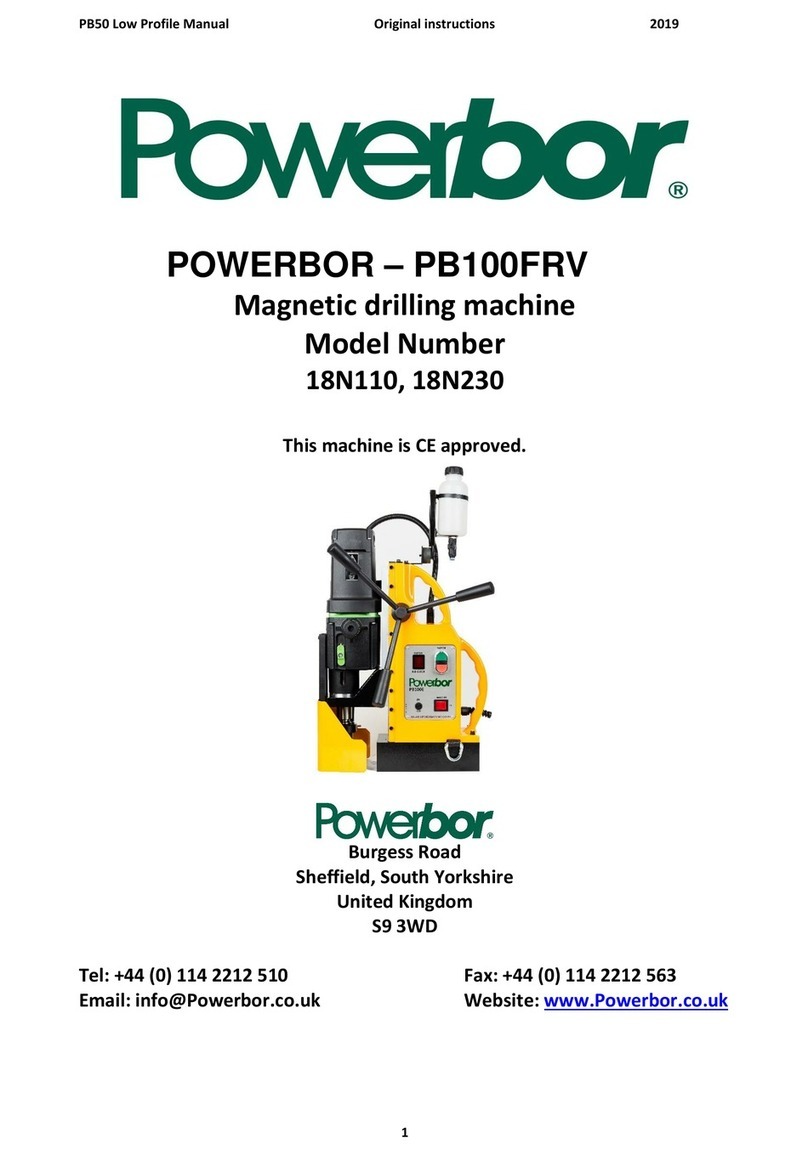5) OPERATIONAL SAFETY PROCEDURES
READ BEFORE USING THE MACHINE
•When using electrical tools, basic safety precautions should always be followed to reduce the risk of electric shock, fire, and personal injury.
•Ensure the magnet is OFF before plugging in the machine.
•Do NOT use in wet or damp conditions. Failure to do so may result in personal injury.
•Do NOT use in the presence of flammable liquids, gases or in high risk environments. Failure to do so may result in personal injury.
•BEFORE activating the machine, inspect all electrical supply cables (including extension leads), and replace if damaged. DO NOT use if there are
any signs of damage.
•Only use extension cables approved for site conditions.
•BEFORE activating the machine, ALWAYS check the correct function of all operational systems, switches, magnet etc.
•BEFORE operating, the machine MUST be securely restrained to a fixed independent feature (by using safety strap RD4329B, or other means) to
reduce the potential free movement, should the magnet become detached from the work piece. Failure to do so may result in personal injury.
•ALWAYS wear approved eye protectors, ear defenders and recommended PPE at ALL times when operating the machine.
•Disconnect from power source when changing cutters or working on the machine.
•Cutters and swarf are sharp, ALWAYS ensure that hands are adequately protected when changing cutters or removing swarf. Use a tool or brush
where necessary to remove any swarf or the cutter from the arbor.
•Before operating the machine, ALWAYS ensure cutter-retaining screws are secured tightly.
•Regularly clear the work area and machine of swarf and dirt, paying particular attention to the underside of the magnet base.
•ALWAYS remove tie, rings, watches and any loose adornments that might entangle with the rotating machinery before operating.
•ALWAYS ensure that long hair is securely enclosed by an approved restraint before operating the machine.
•Should the cutter become stuck in the work piece, stop the motor immediately to prevent personal injury. Disconnect from power source and
turn arbor to and fro. DO NOT ATTEMPT TO FREE THE CUTTER BY SWITCHING THE MOTOR ON AND OFF. Wear safety gloves to remove the
cutter from the arbor.
•If the machine is accidentally dropped, ALWAYS thoroughly examine the machine for signs of damage and check that it functions correctly
BEFORE resuming drilling.
•Regularly inspect the machine and check for any damaged or loose parts.
•ALWAYS ensure when using the machine in an inverted position that only the minimum amount of coolant is used, and that care is taken to
ensure that coolant does not enter the motor unit.
•Cutting tools may shatter, ALWAYS position the guard over the cutter before activating the machine. Failure to do so may result in personal
injury.
•On completion of the cut, a slug will be ejected. DO NOT operate the machine as the ejected slug may cause injury.
•When not in use ALWAYS store the machine in a safe and secure location.
•ALWAYS ensure that approved POWERBOR™ agents conduct repairs.
6) OPERATING INSTRUCTIONS
•Keep the inside of the cutter clear of swarf. It restricts the operating depth of the cutter.
•Ensure that the coolant bottle contains sufficient cutting oil to complete the required operating duration. Refill as required.
•Occasionally depress the pilot to ensure cutting fluid is being correctly metered.
•To start the machine, follow the control panel operation instructions.
•ALWAYS switch off the motor by depressing the MOTOR stop button. DO NOT switch off the motor by depressing the MAGNET switch.
•Apply light pressure when commencing the cut of a hole until the cutter is introduced into the work surface. Pressure can then be increased
sufficiently to load the motor. Excessive pressure is undesirable, it does not increase the speed of penetration and will cause the safety overload
protection device to stop the motor, (the motor can be restarted by operating the motor start button), and may cause excessive heat which
may result in inconsistent slug ejection
•Always ensure that the slug has been ejected from the previous hole before commencing to cut the next.
•If the slug sticks in the cutter, move the machine to a flat surface, switch on the magnet and gently bring the cutter down to make contact with
the surface. This will usually straighten a cocked slug and allow it to eject normally.
•Apply a small amount of light oil lubricant regularly to the slide and arbor support bearing.
•Cutter breakage is usually caused by insecure anchorage, a loosely fitting slide or a worn bearing in the arbor support. (Refer to routine
maintenance instructions).
•Only use approved cutting fluid.
